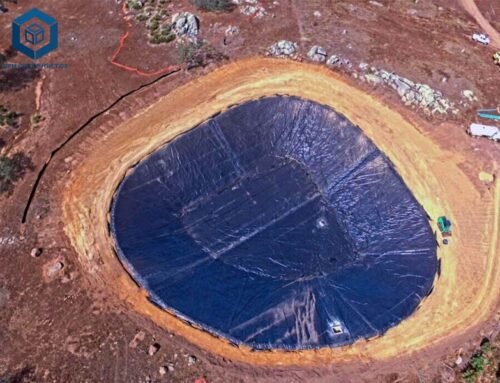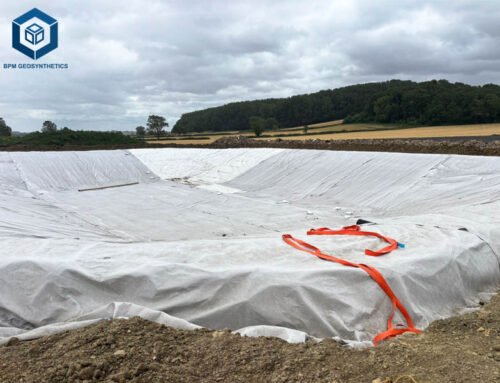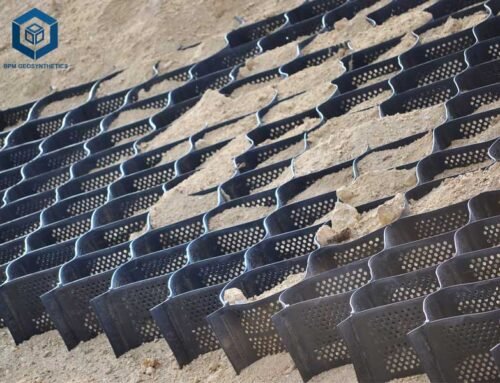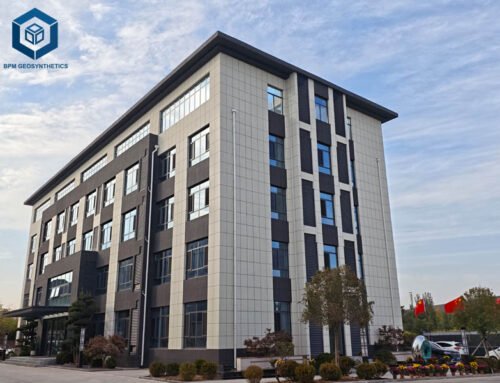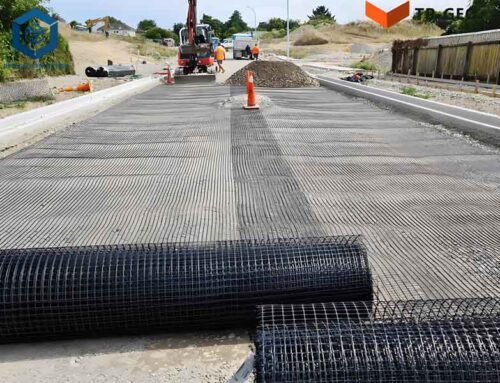Geocells, also known as cellular confinement systems, are innovative geosynthetic materials revolutionizing civil engineering and environmental projects. These three-dimensional, honeycomb-like structures stabilize soil, control erosion, and reinforce infrastructure, offering cost-effective and sustainable solutions for applications like road construction, slope protection, and retaining walls. With global infrastructure spending projected to reach USD 9.5 trillion by 2030, geocells are increasingly vital in addressing modern construction challenges. Understanding the cost of geocells per square foot is essential for project managers, engineers, contractors, and homeowners aiming to balance budgets with performance. This comprehensive guide explores the factors influencing geocell costs, provides detailed pricing data, and offers actionable insights to optimize your project’s financial and structural outcomes.
1. What is a Geocell?
Geocells are three-dimensional, cellular structures typically made from high-density polyethylene (HDPE), polypropylene (PP), or other polymers, connected through ultrasonic welding or mechanical fasteners to form a honeycomb grid. When expanded and filled with materials like soil, gravel, or concrete, geocells confine the infill, enhancing soil stability, load distribution, and erosion resistance. Their perforated design allows water and nutrients to pass through, promoting drainage and vegetation growth, making them ideal for eco-friendly projects.
The global geocells market, valued at USD 670 million in 2023, is expected to grow at a compound annual growth rate (CAGR) of 7.7% through 2032, driven by rising infrastructure development and sustainable construction demands. Geocells reduce material and labor costs by up to 30–50% compared to traditional methods like concrete or riprap, making them a cost-effective choice for projects ranging from rural driveways to major highways. This article breaks down the cost of geocells per square foot, key specifications, and strategies to maximize value.
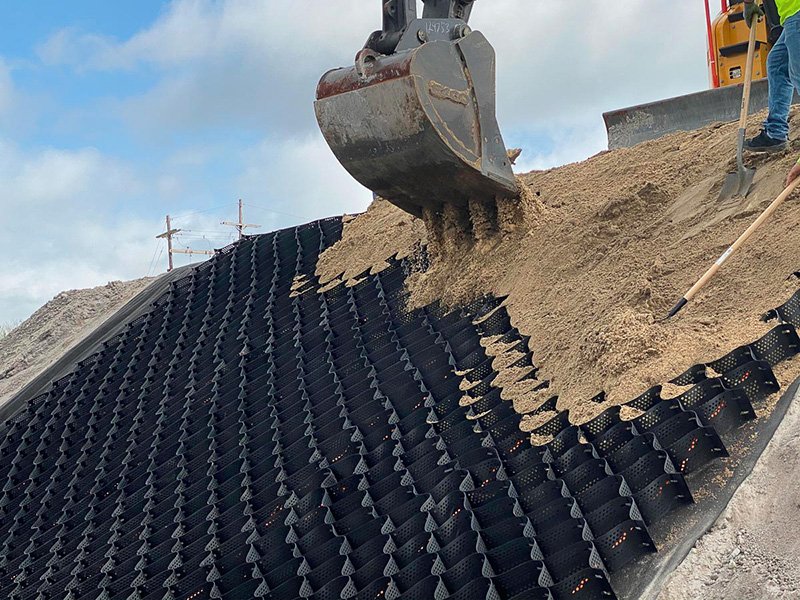
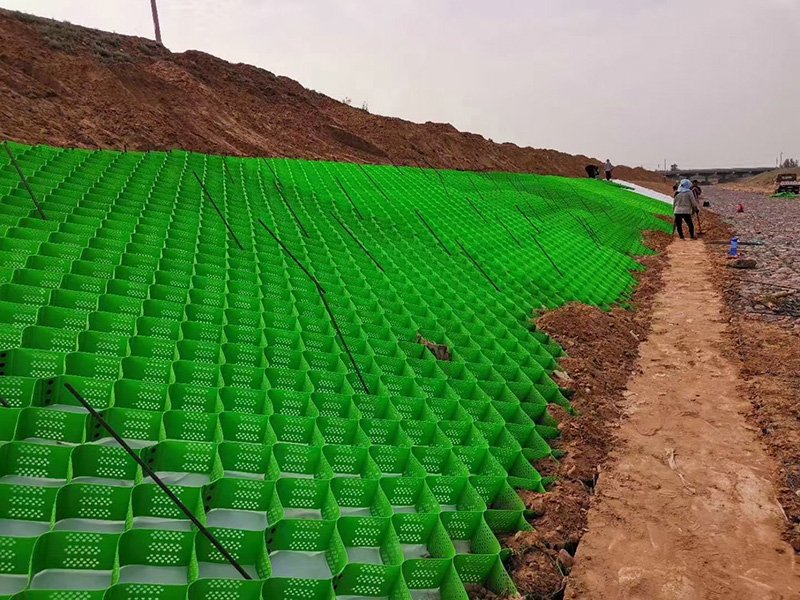
2. Factors Influencing Geocell Cost per Square Foot
The cost of geocells per square foot varies based on material type, cell height, seam strength, project scale, and installation requirements. Below, we delve into these factors to provide a clear understanding of what drives pricing.
2.1 Material Type
The material used to manufacture geocells significantly impacts cost and performance. Common materials include:
- High-Density Polyethylene (HDPE):Priced at $0.50–$3.00 per square foot, HDPE geocells are corrosion-resistant, UV-stable, and durable, ideal for long-term projects like road bases and railway embankments. Their robustness suits heavy-duty applications but may increase costs for high-quality virgin resin.
- Polypropylene (PP):Costing $0.40–$2.50 per square foot, PP geocells are lightweight and cost-effective, suitable for temporary or light-load projects like slope greening. They offer flexibility but lower durability compared to HDPE.
- Polyester Fiber Reinforced:Ranging from $1.00–$4.00 per square foot, these high-strength geocells are used in demanding applications like military access roads, where enhanced tensile strength is critical.
- Geotextile Fabric:Fabric-based geocells, costing $0.80–$3.50 per square foot, are permeable and ideal for tree root protection and erosion control, allowing water flow and vegetation growth.
Raw material prices, particularly for HDPE and PP, fluctuate with crude oil markets, with a 7% price increase noted in Q1 2025 due to supply chain constraints. Selecting the right material depends on project requirements, environmental conditions, and budget.
2.2 Cell Height and Depth
Geocell height, ranging from 2 to 12 inches (50–300 mm), directly affects cost and load-bearing capacity. Deeper cells support heavier loads but require more material, increasing costs.
- 2–3 inches (50–75 mm):$0.40–$1.50/sq ft, suitable for light traffic like walkways and residential landscaping.
- 4–6 inches (100–150 mm):$1.00–$2.50/sq ft, ideal for driveways, overflow parking, and moderate slope protection.
- 8–12 inches (200–300 mm):$2.00–$4.00/sq ft, used for heavy-duty applications like commercial roads, boat ramps, and retaining walls.
For example, a 4-inch HDPE geocell (e.g., Excell100-330-1.5) costs $1.50–$2.00/sq ft, while an 8-inch version costs $2.50–$3.50/sq ft due to increased material and structural capacity.
2.3 Seam Peel Strength and Welding Distance
Seam peel strength, measured in kN/m, indicates the durability of geocell connections. Higher strength requires premium materials and manufacturing processes, increasing costs.
- GB Standard (Recycled HDPE):10–12 kN/m, $0.50–$2.00/sq ft, suitable for cost-sensitive projects.
- ASTM Standard (Virgin HDPE):2–16 kN/m, $1.00–$3.00/sq ft, offering superior durability for critical infrastructure.
Welding distance, or the spacing between cell connections (240–1000 mm), affects grid density. Smaller distances (e.g., 330 mm) create denser grids, increasing costs by 5–10% but enhancing stability for heavy loads.
2.4 Cell Wall Thickness
Cell wall thickness, typically 0.9–2.0 mm, influences strength and cost. Thicker walls (1.5–2.0 mm) cost $1.50–$3.50/sq ft and are used for high-load applications, while thinner walls (0.9–1.2 mm) cost $0.40–$2.00/sq ft for lighter projects. Textured or perforated surfaces, which improve infill retention, add 5–10% to costs.
2.5 Infill Material
The choice of infill material impacts both performance and cost. Common options include:
- Sand/Soil:$0.10–$0.50/sq ft, low-cost but low-strength, ideal for slope greening and light-load areas.
- Gravel/Crushed Stone (2–5 cm):$0.50–$1.50/sq ft, offering high bearing capacity and permeability for road bases and driveways.
- Concrete:$1.00–$3.00/sq ft, providing maximum strength for heavy-load areas like military paths but increasing construction complexity.
- Recycled Aggregate:$0.30–$1.00/sq ft, eco-friendly and cost-effective for sustainable projects.
Using local or recycled infill can reduce costs by 20–40% compared to imported materials, while ensuring compatibility with project requirements.
2.6 Project Scale and Bulk Purchasing
Larger projects benefit from economies of scale, with bulk purchases (over 10,000 sq ft) reducing geocell costs by 10–20%. For example, a 50,000 sq ft highway project using 4-inch HDPE geocells may cost $1.20–$1.80/sq ft in bulk, compared to $1.50–$2.00/sq ft for smaller orders. Custom panel sizes, covering up to 230 sq ft per panel, minimize seams and installation time, further lowering costs.
2.7 Installation Costs
Installation costs, ranging from $0.50–$2.00 per square foot, depend on project complexity, labor rates, and site conditions. Key components include:
- Site Preparation:Excavation and grading cost $1.00–$3.00/sq ft, higher for challenging terrains like steep slopes.
- Geocell Laying:Deploying and staking geocells costs $0.30–$1.00/sq ft, with custom panels reducing labor time.
- Infill and Compaction:Filling and compacting infill materials cost $0.20–$1.00/sq ft, depending on material type and equipment needs.
Using local labor and lightweight geocells can reduce installation costs by 15–25%.
2.8 Regional and Supplier Variations
Geocell prices vary by region due to differences in manufacturing, shipping, and labor costs. In Asia-Pacific, particularly China, prices are 10–20% lower due to abundant raw material supply and lower production costs. North American and European markets face higher costs due to stricter regulations and shipping expenses, with a 5% increase in Q1 2025 from port congestion. Premium suppliers like Presto Geosystems or BaseLok charge 10–15% more for certified products meeting ASTM and ISO standards, ensuring 20% longer lifespans.
3. Geocell Cost per Square Foot Breakdown
To provide clarity, here’s a detailed cost breakdown for common geocell types and specifications, based on 2025 market data.
| Geocell Type | Material | Height (inches) | Seam Strength (kN/m) | Cost per Square Foot |
| Standard | HDPE | 2–3 | 10–12 | $0.40–$1.50 |
| Standard | PP | 2–3 | 8–10 | $0.40–$1.20 |
| Medium-Duty | HDPE | 4–6 | 12–14.2 | $1.00–$2.50 |
| Medium-Duty | PP | 4–6 | 10–12 | $0.80–$2.00 |
| Heavy-Duty | HDPE | 8–12 | 14.2–16 | $2.00–$4.00 |
| Heavy-Duty | Polyester | 8–12 | 16–20 | $2.50–$4.50 |
| Fabric-Based | Geotextile | 4–6 | 8–12 | $0.80–$3.50 |
Total Cost Range (Materials): $0.40–$4.50 per square foot.
Total Cost Range (Including Installation): $0.90–$6.50 per square foot.
For a 1,000 sq ft project using 4-inch HDPE geocells with gravel infill, material costs range from $1,000–$2,500, with installation adding $500–$2,000, totaling $1,500–$4,500 ($1.50–$4.50/sq ft).
4. Cost Comparison: Geocells vs. Traditional Methods
Geocells offer significant savings compared to traditional soil stabilization methods like concrete or asphalt. Here’s a comparison:
- Geocells:$0.90–$6.50/sq ft (materials and installation), with reduced aggregate needs and faster installation (1–2 days for 1,000 sq ft).
- Concrete:$5.00–$15.00/sq ft, requiring formwork, rebar, and curing time (5–7 days for 1,000 sq ft).
- Asphalt:$4.00–$12.00/sq ft, with higher maintenance costs due to cracking and weathering.
Geocells can save up to 70% on material and labor costs and reduce construction time by 50%, making them ideal for budget-conscious projects.
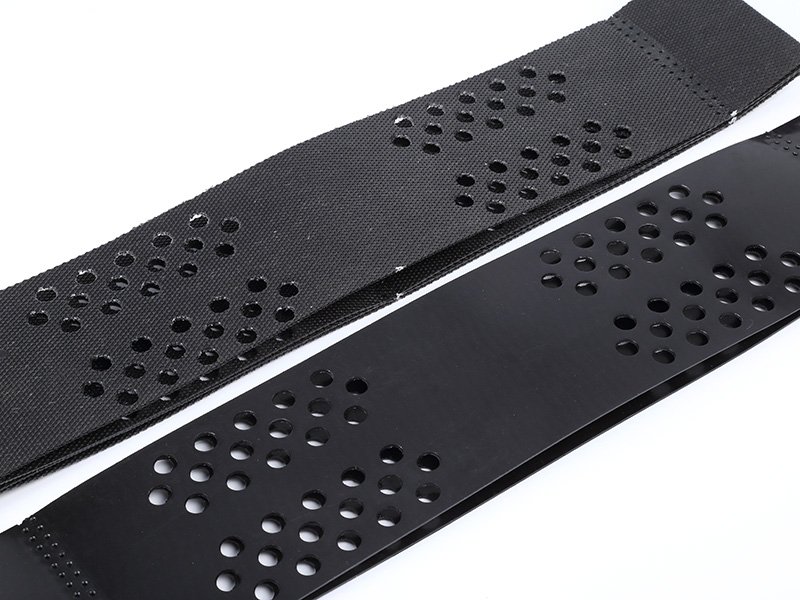
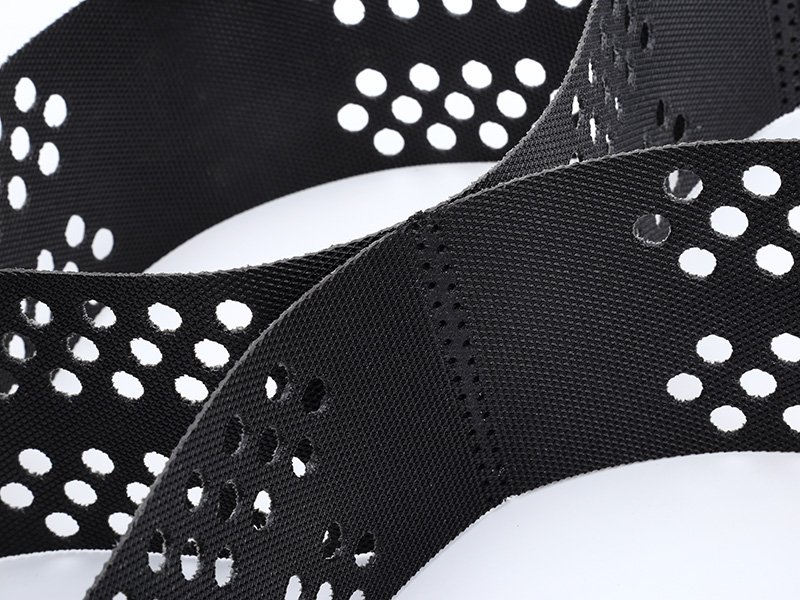
5. Geocell Specifications and Parameters
Selecting the right geocell requires understanding key specifications to ensure performance and cost-efficiency. Below are critical parameters to consider:
5.1 Cell Height and Load Capacity
Cell height determines load-bearing capacity:
- 2–3 inches:8,000–20,000 lbs load rating, suitable for pedestrian paths and light vehicles.
- 4–6 inches:40,000–60,000 lbs, ideal for driveways, parking lots, and moderate slopes.
- 8–12 inches:80,000+ lbs, used for commercial roads, heavy equipment, and retaining walls.
5.2 Seam Peel Strength
Seam strength ensures structural integrity:
- 10–12 kN/m:Adequate for light-duty applications like slope greening.
- 2–16 kN/m:Required for heavy-duty projects, ensuring long-term stability.
5.3 Cell Wall Thickness and Texture
Thicker walls (1.5–2.0 mm) enhance durability, while textured or perforated surfaces improve infill retention and drainage. Perforated geocells cost 5–10% more but reduce water runoff by 30%.
5.4 Panel Size and Coverage
Standard panels cover 180–230 sq ft when expanded, with custom sizes up to 300 sq ft reducing seams and installation time. Larger panels cost 5–10% more but save 10–15% on labor.
5.5 Environmental Resistance
HDPE geocells resist UV, chemicals, and temperatures from -40°F to 140°F, offering 30–50 year lifespans. PP geocells are less durable but suitable for temporary projects.
6. Cost-Saving Strategies for Geocell Projects
To maximize value, consider these cost-saving strategies:
- Conduct a Geotechnical Analysis:A soil analysis identifies optimal cell height and material, reducing over-specification costs by 10–20%.
- Use Local or Recycled Infill:Local gravel or recycled aggregate can save 20–40% on infill costs.
- Purchase in Bulk:Orders over 10,000 sq ft secure 10–20% discounts.
- Choose Custom Panels:Larger panels reduce seams and installation time, saving 10–15% on labor.
- Select Appropriate Geocells:Use PP for temporary projects and HDPE for long-term durability, avoiding unnecessary expenses.
- Hire Experienced Contractors:Skilled installers minimize waste and ensure proper compaction, reducing maintenance costs by 20–30%.
7. Case Studies: Real-World Geocell Costs
Case Study 1: Rural Driveway Stabilization
Project Details: A 2,000 sq ft rural driveway using 4-inch HDPE geocells with gravel infill.
- Geocell Cost:2,000 sq ft at $1.50/sq ft = $3,000
- Installation Labor:$0.80/sq ft = $1,600
- Gravel Infill:$0.50/sq ft = $1,000
- Site Preparation:$1.00/sq ft = $2,000
- Total Cost:$7,600 ($3.80/sq ft)
Key Savings: Local gravel reduced infill costs by 30%, and custom panels minimized labor time.
Case Study 2: Commercial Retaining Wall
Project Details: A 5,000 sq ft retaining wall using 8-inch HDPE geocells with concrete infill.
- Geocell Cost:5,000 sq ft at $2.50/sq ft = $12,500
- Installation Labor:$1.50/sq ft = $7,500
- Concrete Infill:$2.00/sq ft = $10,000
- Site Preparation:$2.00/sq ft = $10,000
- Total Cost:$40,000 ($8.00/sq ft)
Key Savings: High-strength geocells reduced the need for deep foundations, saving 20% on construction costs.
8. How to Get Accurate Geocell Cost Estimates
To ensure precise budgeting, follow these steps:
- Define Project Requirements:Specify the application (e.g., road, slope) and load conditions to select appropriate cell height and material.
- Request Multiple Quotes:Contact at least three suppliers for competitive pricing on certified geocells.
- Consult a Geotechnical Engineer:For complex projects, an engineer can optimize specifications, reducing costs.
- Use Design Software:Tools like GeoStudio or BaseCore’s calculators estimate material quantities accurately.
- Check Local Regulations:Ensure compliance with standards, as some regions require specific certifications, impacting costs.
9. Conclusion
Geocells offer a cost-effective, durable, and eco-friendly solution for soil stabilization and erosion control, with costs ranging from $0.90 to $6.50 per square foot, including materials and installation. By understanding key factors—material type, cell height, seam strength, and infill choices—you can select the right geocell for your project while optimizing costs. Strategic decisions like bulk purchasing, using local infill, and leveraging custom panels can save 10–30% on expenses. With the global geocells market projected to grow at 7.7% through 2032, these systems are a proven investment for modern infrastructure. Whether stabilizing a driveway or reinforcing a railway embankment, geocells deliver unmatched value, durability, and sustainability for your next project.
For custom quotes at best factory price, please contact BPM Geosynthetics.

